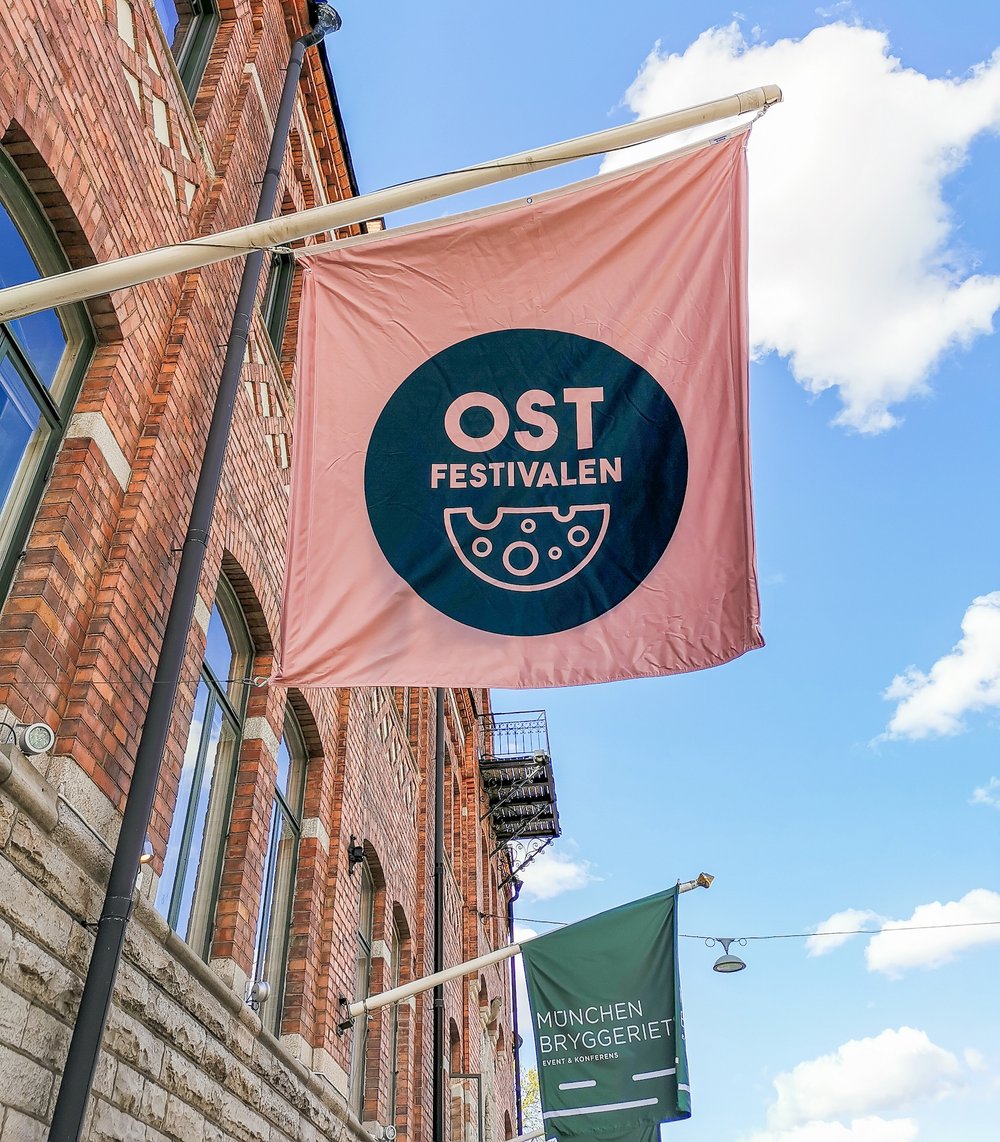
It’s my belief that the world’s best cheeses come from Sweden. It’s a bold claim, but it’s one I’ll stand by because proof is yours for the taking every February, when cheese producers from all over the country descend upon Stockholm for three days of tasting and triumph.
This year, however, the Swedish Cheese Festival (Ostfestivalen in the local language) took place in May following pandemic postponement. I was there as the doors opened on a Friday afternoon—delighted to return for my fourth attendance of this glorious event—and I wasn’t the only one. A long line of people trickled from the lobby of Münchenbryggeriet, the spacious venue that I knew would be lined with booths proffering samples of locally crafted cheeses.
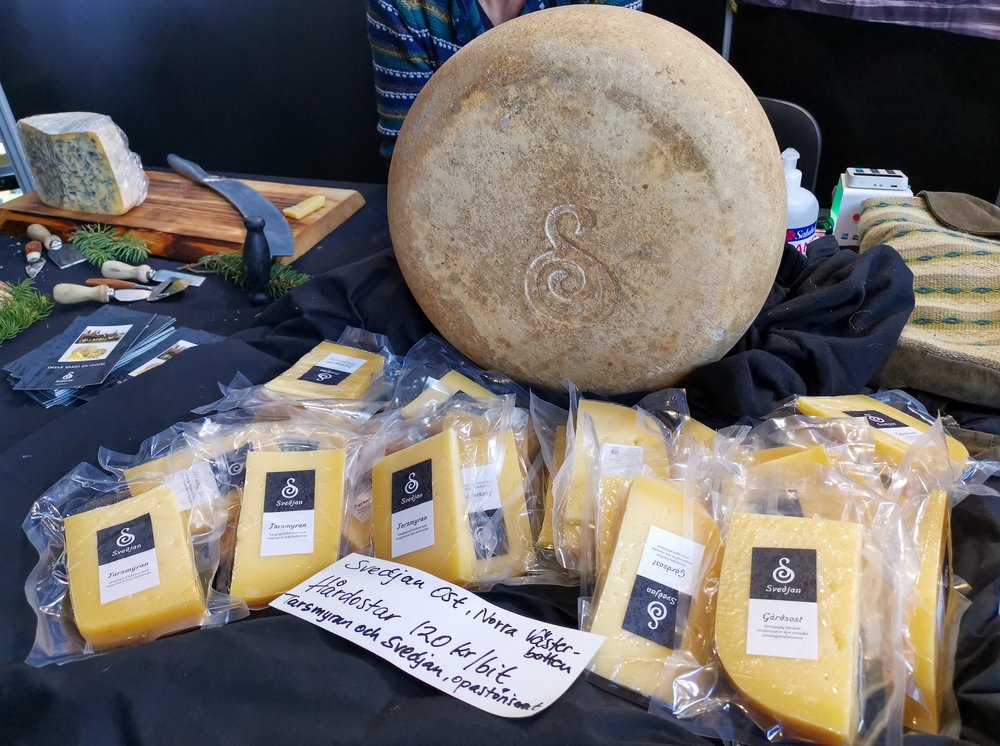
Indulging in Svedian Ost
My first stop was Svedjan Ost, where I enjoyed a few minutes of catch-up with Johanna and Pär Hellström. I spent three memorable nights on their farm in the summer of 2018, slumbering in a 19th-century cabin on an expansive cattle pasture overlooking Lake Storkågeträsk while I learned about cheesemaking traditions in the Swedish north. Their prize-winning Gårdsost—an aged hard cheese with subtle notes of nuts and fruit—has been a favorite since my first sample during 2016’s Swedish Cheese Festival.
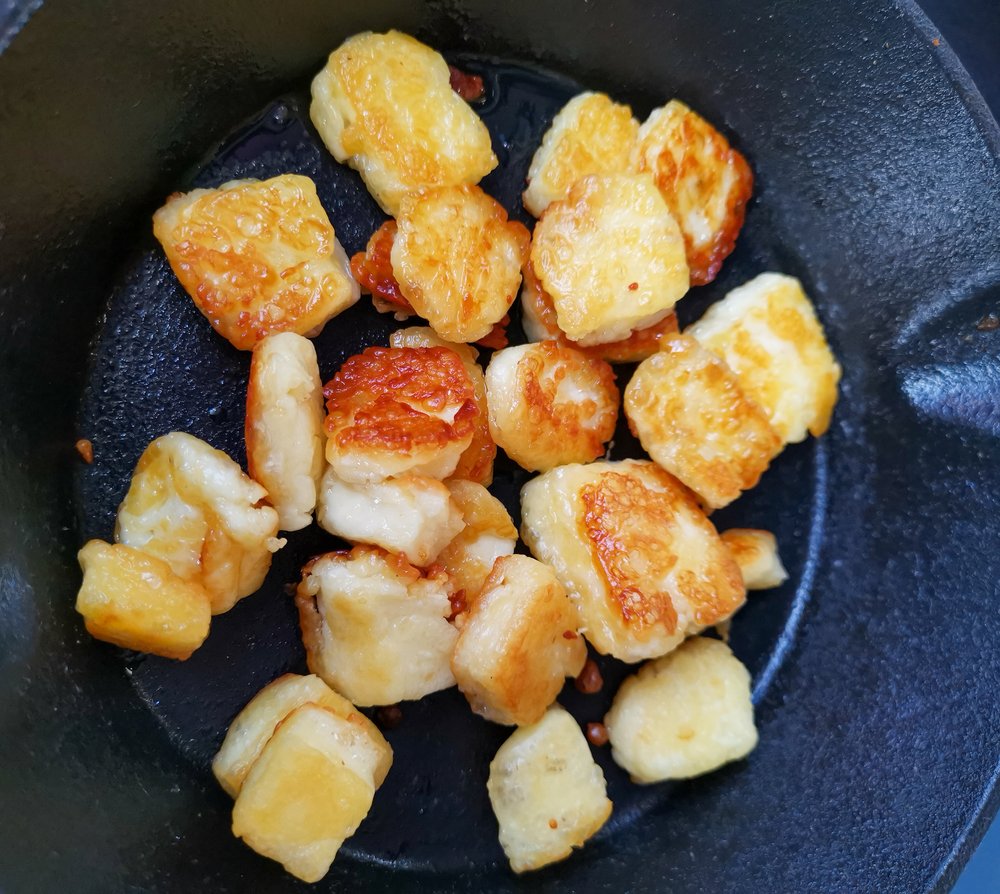
The Popularity of Grillost
As I made my way around the exhibition hall, I noticed that quite a few producers were offering samples of grillost, or “grill cheese.” This is Sweden’s answer to the beloved halloumi of Cyprus—it’s wonderfully grillable and achieves a crisp, golden surface while retaining a soft texture within. Cheesemakers who are part of Sveriges Gårdsmejerister, the Association of Sweden’s Dairy Farmers, may sell their grillost as Eldost (“fire cheese”), a trademarked name indicating both membership and the exclusive use of Swedish milk in the cheese’s production.
Having counted no less than seven booths offering samples of this type of cheese, I asked Alexander Lowejko of Björkenäs Ost why there seemed to be so much grillost at the festival this year.
“It’s easy to make,” he told me, politely ignoring my reach for a third bite of Björkenäs Eldost, which I found especially delicious with his homemade jalapeno jam.
Our conversation shifted to the importance of using local ingredients in food production, not only to ensure quality, but because it’s the responsible thing to do for the environment and for each other. “Our generation should be able to look our kids in the eyes and say we did everything we could,” Lowejko explained.
Later, I would happily learn that he and his wife won the public vote this year with their Eldost, after more than 500 festival attendees declared it their favorite cheese of the festival.
Over at the Västerbottensost booth, which I’d casually walked past several times until I spotted the return of Thomas Rudin, I settled in for another catch-up session with a familiar face. Rudin is my equivalent of a celebrity crush—he’s the Cheese Master at Västerbottensost and one of only a handful of people who know the recipe for this very special cheese that, despite repeated efforts, cannot be recreated outside of Burträsk, Sweden. I’d joined Rudin on stage for a presentation during the 2018 Swedish Cheese Festival—for which my husband enthusiastically volunteered me despite my abysmal Swedish language skills—and the experience was a personal highlight.
After establishing whether the Västerbottensost crew remembered me (they did) and clearing up whether I still have the leather apron I received that day (I do), I asked for their thoughts on the current prevalence of grillost. Västerbottensost is an aged farmstead cheese and the company’s exclusive product—I figured their insights would be impartial since they don’t make grillost.
Consensus circled back to Lowejko’s theory about ease of output—grillost can be made in one day—but our discussion raised another curious point: People are drinking less dairy milk, and that milk has to go somewhere. It’s not such a coincidence that cheesemakers are turning milk into a cheese that is quick to make and easy to sell.
Grillost may be an enticing option for the use of excess milk, though I can’t help thinking perhaps the better solution would be to scale back on dairy milk production entirely. It’s a quandary for another article, when time can be taken to examine hard data and speak with dairy farmers to report accordingly.
But this is a great example of why I love the Swedish Cheese Festival. There’s always something to learn; something to provoke thought. Having attended in 2016, 2018, 2019, and 2022, I’m able to discern what’s new, what’s different, and what stays mercifully the same. Västerbottensost celebrates their 150-year anniversary this year, and because this is the cheese that sparked my interest in Swedish cheeses a decade ago, I selfishly hope their traditions won’t change.
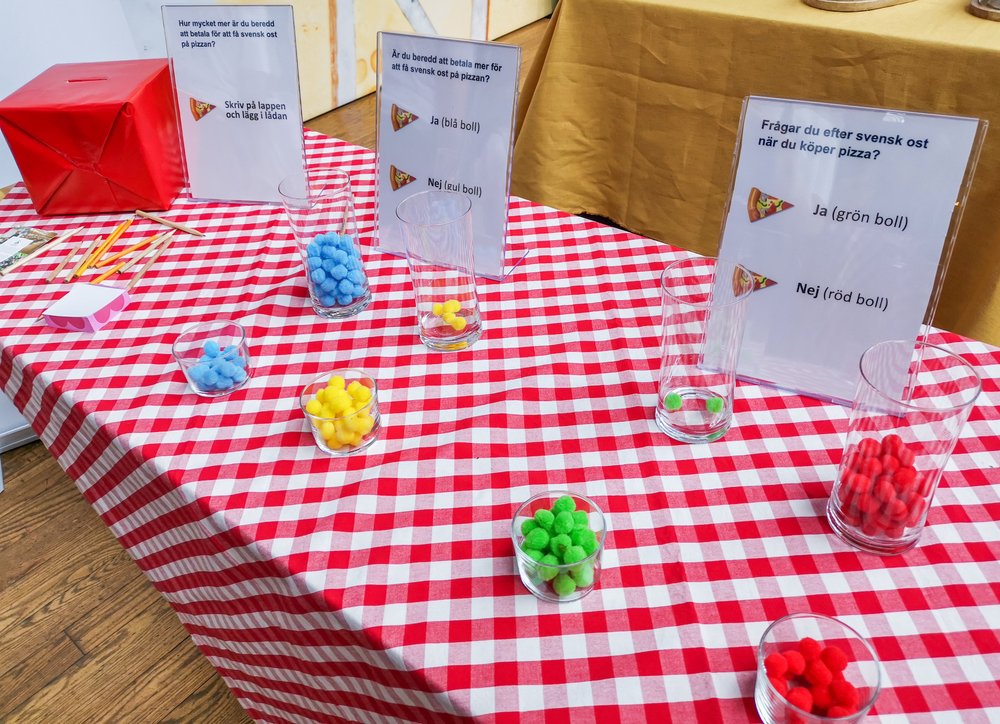
The Importance of Swedish Cheese Pizza
One booth this year that drew my attention and hopefully will spark a shift was that of Landsbygdsnätverket, or the Swedish Rural Network. Instead of offering samples of cheese, they had a table set up with glass jars and lots of small, fuzzy balls. Visitors were asked to drop a ball into a jar indicating whether they ask if the pizzas they order in Sweden are made with Swedish cheese. Perhaps unsurprisingly, the overwhelming majority of respondents do not, in fact, ask if their pizzerias use domestic cheeses.
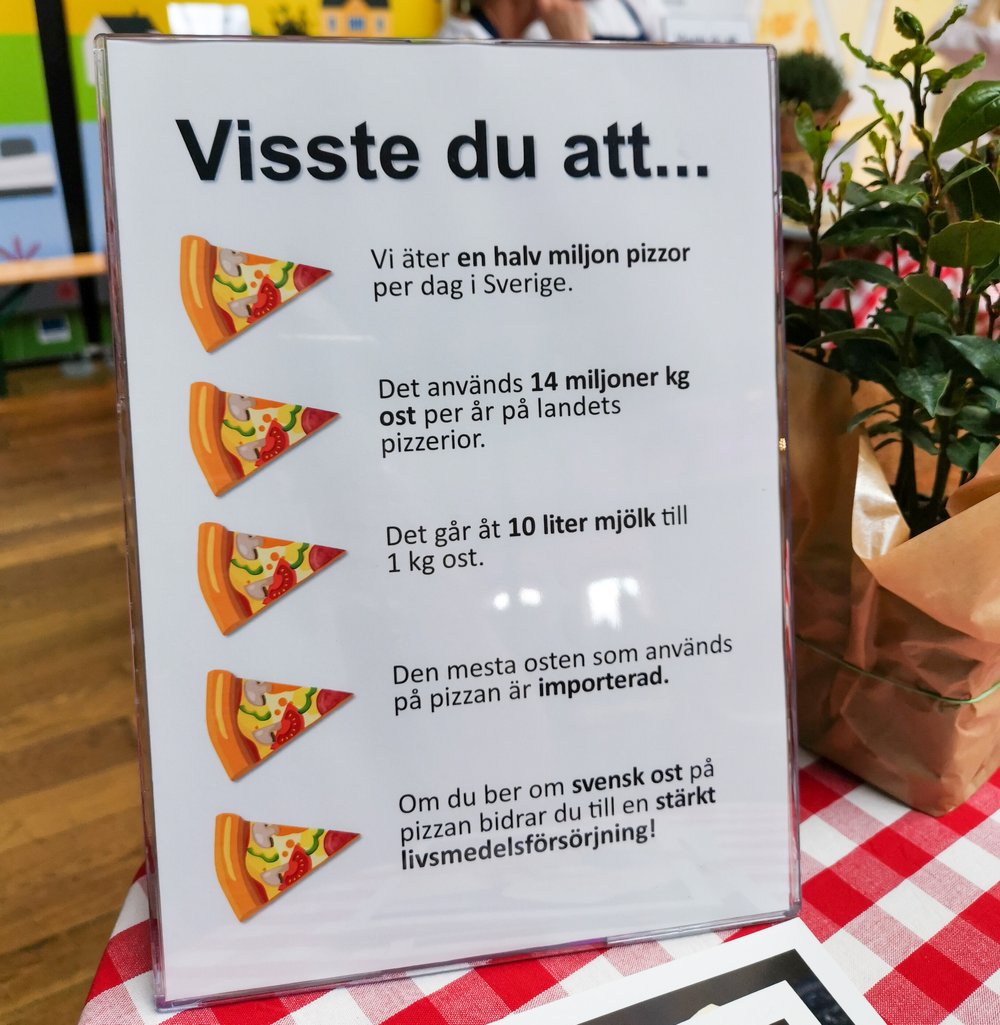
I talked to booth representative Sofia Alriksson, who works with Hushållningssällskapet, a collection of rural economic and agricultural societies. She told me that 500,000 pizzas are sold every day in Sweden, and it’s time that the public has a greater awareness of the use (or lack thereof) of local foods—even when they’re eating from other cultures. Alriksson cited animal welfare and job creation as just two of the reasons why eating local is better for communities. “It’s important for us to realize this,” she said.
As we talked, a small slice of pizza appeared to my right—the Swedish Rural Network crew was handing out samples after all! They meant to start a conversation and they certainly had; and I’m as guilty as anyone else when it comes to this kind of thing. I’d just eaten pizza with my in-laws two nights prior upon my arrival in Stockholm. My Swedish isn’t great, but I know my father-in-law didn’t ask about the origin of the cheese on our pizzas when he called to place the order from the airport parking lot, nor did it occur to me to prompt him to ask. Like many of us, I’m typically aware of a restaurant’s use of local ingredients only when they make it evident on the menu or as part of their branding strategy.
Encouraging, though, is that the other set of jars on the table asked if people would be willing to spend more money on a pizza made with Swedish cheese, and—at least on the afternoon of my visit—most respondents said yes. And so would I.
I left Swedish Cheese Festival 2022 so full of cheese that I had to politely decline my mother-in-law’s offer to warm a plate of the dinner I’d missed that evening. The event was a success as always, though I’d argue that this year’s festival had a different—more optimistic—vibe than before. The conversations around sustainability, the small-scale producers doing big things, and the palpable excitement of an eagerly anticipated event making its return after the pandemic made for an especially uplifting afternoon.
See you there in 2023! In the meantime, check out our guide to the 7 Swedish Cheeses You Should Know.
